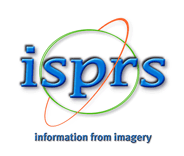THE INFLUENCE OF SPATIAL FAMILIARITY ON THE LANDMARK SALIENCE SENSIBILITY IN PEDESTRIAN NAVIGATION ENVIRONMENT
Keywords: Spatial Familiarity, Landmark Salience Sensibility, Pedestrian Navigation, Landmark Visual Salience, Landmark Semantic Salience, Landmark Structural Salience
Abstract. To contribute to a more effective design of landmark navigation guidance, this paper is concerned with the relationship between the spatial familiarity and landmark salience, which includes visual, semantic and structural attributes. The link of those two is the subjective judgment of users, which is called landmark salience sensibility. In order to explore the influence of spatial familiarity on the landmark salience sensibility, we selected two types of experimental area including campus and commercial district and four groups of experimental subject with different spatial familiarity degree. After the whole walking process, subjects are asked to draw a navigation sketch for themselves. Depending on the landmarks remaining in the sketch, we calculated the three attributes of the mean landmark salience to represent the landmark salience sensibility of each group for both paths. The result shows that with the increase of spatial familiarity, the landmark salience sensitivity is gradually reduced and the ascending order of attention degree to the attributes of the landmark salience is visual, semantic and structural salience. This conclusion is supportive to the study of landmark extraction and pedestrian guidance. Because the outdoor landmarks are analysed, we propose that in the future indoor landmarks are needed to be concerned.






